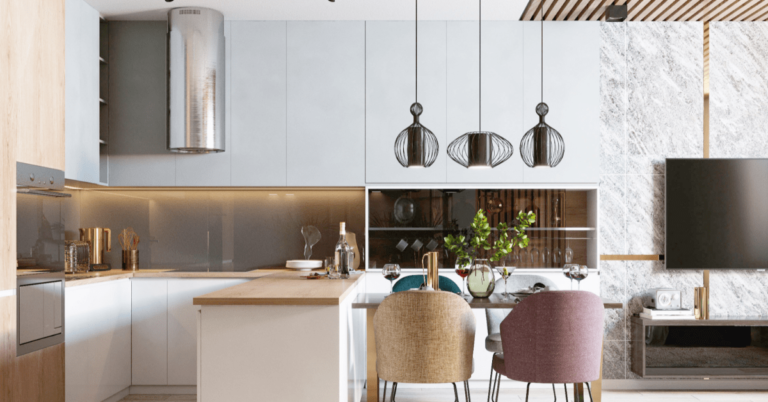Embarking on a home renovation can be an exhilarating journey filled with dreams of transformed spaces. However, it can also be overwhelming, and even a small misstep can lead to costly consequences. To help you navigate the renovation process smoothly, we consulted experienced interior designers who shared their insights on common mistakes to avoid.
In this article, we will discuss three major renovation pitfalls that many homeowners face, along with strategies to prevent them. By understanding these common errors, you can ensure a smoother renovation experience and create the home of your dreams.
1. Overlooking Underlying Issues
Before diving into the aesthetic aspects of a renovation, it’s crucial to address any potential underlying issues in your home. Many homeowners focus on glamorous elements like new countertops and trendy tiles, but neglecting structural concerns can lead to major headaches later.
The Importance of Inspections
“Homeowners often forget to check for structural damage, outdated wiring, or inadequate insulation before starting cosmetic renovations,” says [Designer’s Name], an interior designer with [Company Name]. “These hidden problems can escalate into significant costs if left unaddressed.”
How to Avoid This Mistake
Invest time and resources in a thorough inspection of your home before beginning any renovation. Here are some key steps:
- Hire Professionals: Engage qualified inspectors to assess the foundation, plumbing, electrical systems, and roofing.
- Address Repairs Early: If underlying issues are discovered, prioritize their resolution before proceeding with aesthetic improvements.
- Budget for Contingencies: Set aside a portion of your budget for unexpected repairs to avoid financial strain.
Benefits of Early Detection
By identifying and addressing these issues upfront, you can save time and money in the long run, ensuring a solid foundation for your renovation.
2. Lacking a Comprehensive Renovation Plan
Starting a renovation project without a clear plan is a recipe for disaster. Interior designer [Designer’s Name] emphasizes the importance of looking at the big picture before diving into the details.
Common Planning Pitfalls
“Many homeowners rush into painting and flooring before the structural work is complete,” says [Designer’s Name]. “This often leads to a disjointed process where they have to redo work, extending timelines and budgets.”
How to Avoid This Mistake
Create a detailed renovation plan that outlines each phase of the project. Here’s how to structure your planning process:
- Set Clear Objectives: Define your goals for the renovation, whether it’s increasing property value, enhancing aesthetics, or improving functionality.
- Break Down Tasks: List all necessary tasks and group them by phase (demolition, structural work, cosmetic updates).
- Establish a Timeline: Create a realistic timeline that allows for each phase of the renovation to be completed thoroughly before moving on to the next.
- Allocate a Budget: Determine a budget for each phase, keeping in mind the possibility of unexpected expenses.
The Advantages of Planning
A comprehensive approach helps you stay organized and on track, reducing stress and ensuring that every aspect of your renovation is well thought out.
3. Poor Flooring Transitions
One of the most common design blunders involves clunky transitions between different flooring types. Interior designer [Designer’s Name] highlights how these transitions can disrupt the overall flow of a space.
Why Transitions Matter
“I cringe when I see poorly executed transitions between flooring types,” says [Designer’s Name]. “A quality renovation requires thoughtful planning to ensure a seamless transition from one material to another.”
How to Avoid This Mistake
To achieve smooth flooring transitions, consider the following:
- Consult Professionals: Discuss flooring types and transition methods with your contractor or designer.
- Choose Compatible Materials: Select flooring materials that complement each other and create a cohesive look.
- Plan the Installation Sequence: Ensure that the installation of different flooring types is well-timed to avoid visible gaps or awkward transitions.
Enhancing Aesthetic Appeal
Properly executed transitions enhance the overall aesthetic of your home, creating a polished and professional look that you’ll enjoy for years to come.
Final Thoughts
Renovating your home can be a rewarding experience, but avoiding these common mistakes is essential to ensuring a successful outcome. By addressing underlying issues, creating a comprehensive plan, and focusing on flooring transitions, you can transform your space into the dream home you’ve always wanted.
Additional Tips for a Successful Renovation
- Research Trends: Stay updated on current interior design trends that can enhance your renovation.
- Stay Flexible: Be prepared to adapt your plans based on what you discover during the renovation process.
- Communicate with Your Team: Maintain open lines of communication with contractors and designers to address concerns promptly.
With careful planning and attention to detail, you can navigate the home improvement renovation process confidently and enjoy a beautifully transformed home.

